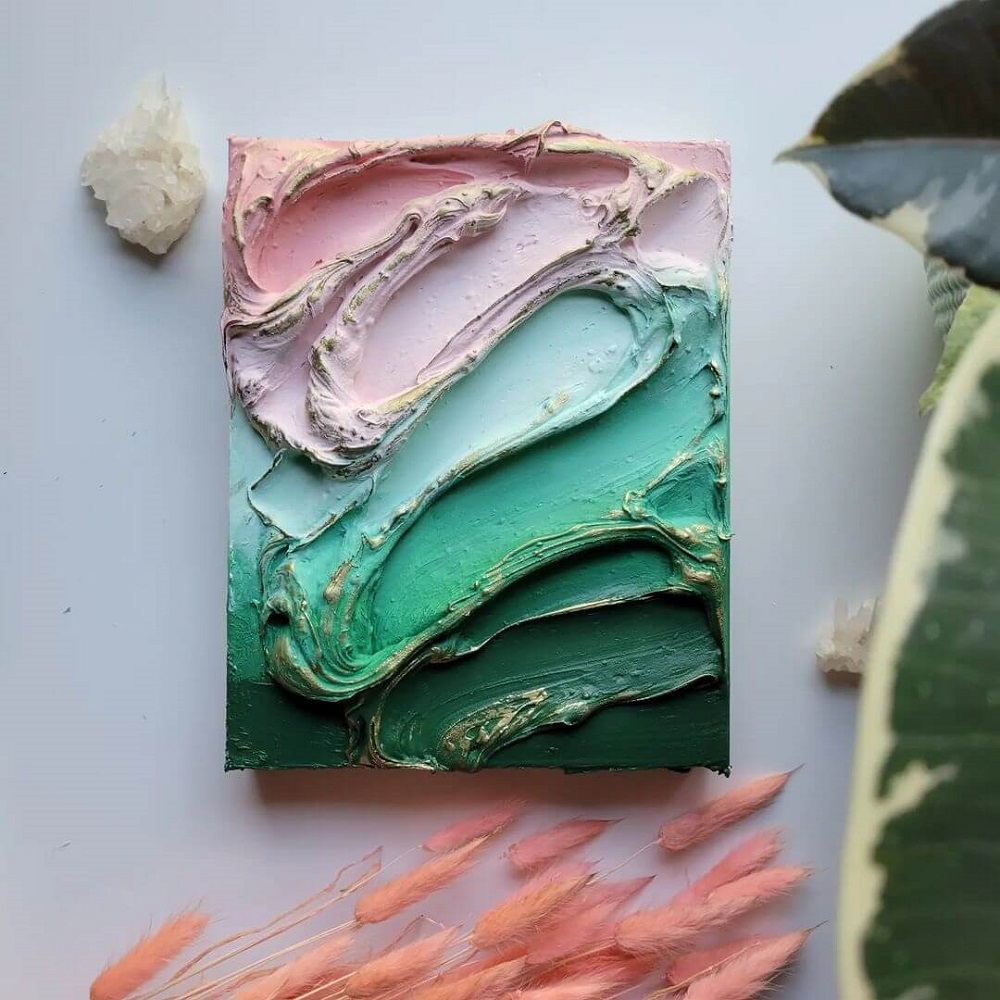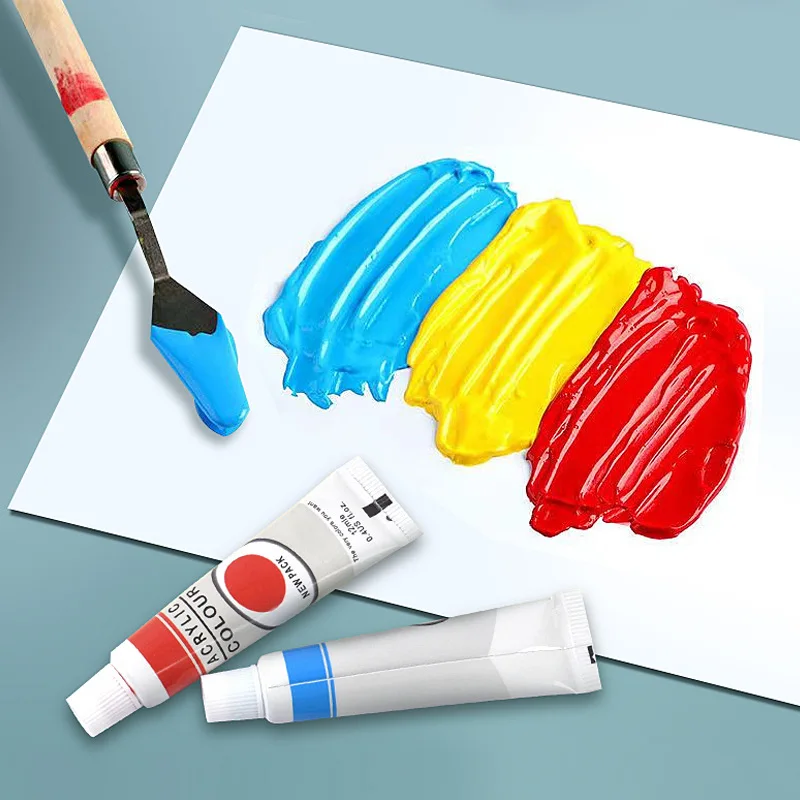Acrylic paint is a versatile and popular medium used by artists of all skill levels. Known for its vibrant colors and adaptability, it has a unique composition that sets it apart from other types of paint. This article will explore the composition of acrylic paint meaning, its various uses, and tips for getting the most out of this artistic tool.
Understanding the Composition of Acrylic Paint
Key Ingredients
Acrylic paint is made primarily of pigment, binder, and water. The pigment provides the color, while the binder (usually an acrylic polymer) holds the pigment particles together and helps them adhere to surfaces. Water acts as the vehicle that makes the paint fluid and easy to apply.
Pigments can be natural or synthetic, affecting the paint’s color and opacity. The binder, being an acrylic polymer, gives the paint its flexibility and durability. This combination allows acrylic paint to dry quickly and maintain its color over time, making it a favorite among artists.
Additives and Mediums
In addition to the main ingredients, acrylic paint often contains additives and mediums. Additives can modify the paint’s properties, such as its drying time, texture, and finish. Common additives include retarders (to slow drying time), flow improvers (to enhance fluidity), and matting agents (to reduce gloss).
Mediums are used to alter the characteristics of the paint further. For example, gel mediums can thicken the paint for texture work, while fluid mediums can thin it for glazing techniques. Understanding these additives and mediums allows artists to customize their acrylic paint to suit specific artistic needs.

Basic Uses of Acrylic Paint
Painting on Canvas
Painting on canvas is one of the most popular uses of acrylic paint. Its quick-drying nature and vibrant colors make it ideal for creating detailed works and bold compositions. Artists can use a variety of brushes and techniques to achieve different effects, such as smooth gradients or textured strokes.
Acrylic paint can be applied in layers, allowing for easy corrections and adjustments. This versatility makes it suitable for beginners and experienced artists. With the right surface preparation and finishing, acrylic paintings on canvas can last for many years without fading or cracking.
Craft Projects
Acrylic paint is also widely used in various craft projects. From painting wooden crafts to personalizing ceramic items, its adhesive properties and quick drying time make it perfect for a range of surfaces. Whether creating decorative items or personalized gifts, acrylic paint offers endless possibilities.
Craft enthusiasts appreciate how easy it is to mix and blend acrylic colors. This flexibility, combined with the ability to adhere to different materials like wood, metal, and fabric, makes acrylic paint a staple in the craft world. Simple projects can quickly become colorful masterpieces.

Advanced Techniques with Acrylic Paint
Impasto Technique
The impasto technique involves applying thick layers of paint to create texture and dimension. Acrylic paint is particularly suited for this due to its quick-drying and flexible nature. Artists can use palette knives or brushes to build up layers, resulting in a tactile, visual effect.
This technique adds depth and interest to a painting, making it visually striking. The ability to hold peaks and ridges without cracking sets acrylic paint apart from other mediums like oil. Experimenting with impasto can lead to unique and dynamic artworks.
Pouring Technique
Acrylic pouring is a fascinating method that creates abstract, marbled effects. By mixing acrylic paint with pouring mediums, artists can achieve a fluid viscosity that allows the paint to flow freely across the canvas. The result is a vibrant, organic pattern that is both spontaneous and beautiful.
This technique has gained popularity for its ease and unpredictability. While beginners can achieve stunning results, mastering the control of colors and flow takes practice. Pouring mediums play a crucial role in ensuring the paint remains fluid and vibrant during the process.

Specialized Uses of Acrylic Paint
Mixed Media Art
Acrylic paint is excellent for mixed media art due to its ability to adhere to various surfaces and mix well with other materials. Artists often combine acrylics with pastels, charcoal, and even collage elements to create layered and textured compositions.
Using acrylics in mixed media projects enhances creativity and allows for a broader range of expression. The fast-drying nature of acrylics means artists can quickly add layers without long waiting times. This makes it possible to build complex pieces efficiently.
Decorative Mural Painting
Decorative mural painting is another specialized use of acrylic paint. Its durability and resistance to fading make it perfect for creating large-scale artworks. Murals can transform spaces, adding color and personality to both interior and exterior walls.
Acrylic’s weather-resistant properties ensure that outdoor murals remain vibrant over time. The paint’s flexibility also allows it to adhere to various surfaces, from brick to plaster. Mural artists appreciate acrylics for their blendability and the ability to cover large areas efficiently.

Tips for Using Acrylic Paint
Proper Brush Care
Taking care of brushes is essential for achieving the best results with acrylic paint. Acrylics can dry quickly, so it’s important to keep brushes moist and clean them thoroughly after each use. Using a brush cleaner or mild soap and water can help remove any residual paint.
Proper brush care extends the life of your tools and maintains their performance. Storing brushes upright with bristles facing up and keeping them away from direct sunlight will also help preserve their shape and condition. Investing in good-quality brushes can make a significant difference in your painting experience.
Experimenting with Techniques
One of the best ways to explore the potential of acrylic paint meaning is by experimenting with various techniques. Try mixing different mediums, applying paint with unconventional tools, or incorporating other materials into your work. The versatility of acrylic paint means there are no limits to what you can achieve.
Creating a practice canvas or an art journal can be a great way to test new methods without worrying about the final outcome. This experimentation fosters creativity and helps you discover unique styles and preferences. Embrace the opportunity to play and explore with acrylics.
Common Challenges and Solutions
Preventing Drying Out
A common challenge with acrylic paint meaning is its tendency to dry out quickly. To prevent this, work in small sections and use a palette with a wetting system or a damp cloth to keep the paint moist. You can also mist the palette with water periodically to extend the working time.
Consider using acrylic retarders, which are additives designed to slow down the drying process. This can be especially helpful when blending colors or working on detailed sections. Keeping these solutions in mind will help you manage the quick-drying nature of acrylics more effectively.
Color Fading and Preservation
Acrylic paintings are generally resistant to fading, but exposure to direct sunlight and harsh environmental conditions can still affect them. To preserve your artwork, apply a UV-protective varnish once the painting is completely dry. This adds a protective layer that guards against UV rays and dust.

Choose a varnish that is removable so that it can be cleaned or replaced if necessary. Storing paintings in a controlled environment with stable temperature and humidity levels also helps in maintaining the vibrancy of the colors. These steps will ensure your acrylic artwork remains in excellent condition for years to come.
Eco-Friendly Practices with Acrylic Paint
Choosing Non-Toxic Paints
Eco-friendly practices are increasingly important in art. Opt for non-toxic acrylic paints, which are safer for both the artist and the environment. Many brands now offer eco-friendly options without compromising on quality or color richness.
Non-toxic paints are particularly beneficial when working in enclosed spaces or with children. They reduce exposure to harmful chemicals and make cleanup easier. Supporting brands that prioritize sustainability helps promote a healthier environment.
Recycling and Waste Management
Properly managing paint waste is crucial for environmental protection. Don’t wash excess paint down the drain. Instead, let paint residue dry out and dispose of it with regular waste. Clean brushes and palettes responsibly to minimize water contamination.
Recycling containers and using reusable palettes can also reduce waste. Encouraging these practices, whether in a home studio or a classroom, fosters a sense of responsibility and sustainability in art. Educating others about eco-friendly practices can amplify these positive effects.
Conclusion
Acrylic paint meaning is a remarkable medium with endless possibilities. Its unique composition of pigments, binders, and additives allows for a wide range of applications, from simple paintings to advanced techniques like impasto and acrylic pouring. Whether you are a beginner or an experienced artist, understanding the properties and uses of acrylic paint can greatly enhance your creative process.
By adopting proper techniques, exploring various applications, and embracing eco-friendly practices, you can make the most out of your acrylic painting endeavors. The versatility and vibrancy of acrylic paint meaning ensure that it will remain a favorite among artists for years to come. So, gather your materials, set up your workspace, and let your creativity flow with acrylic paint.